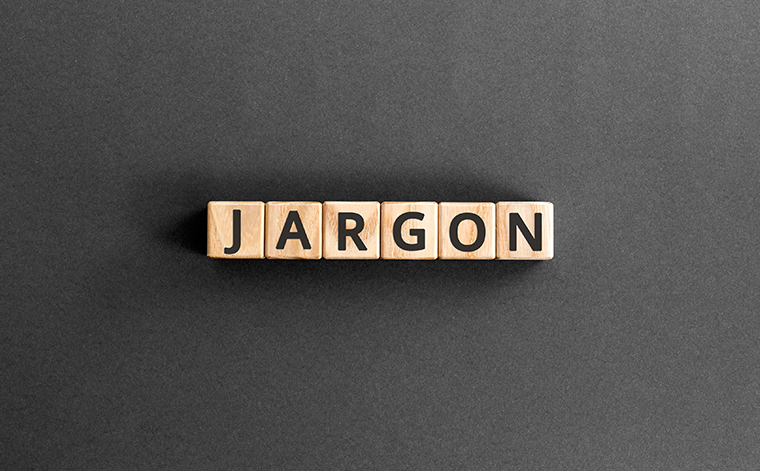Okay, let’s think outside the box for a moment. It’s a no-brainer, right? At the end of the day, everyone understands that these jargony phrases, frequently used as convenient shortcuts, ultimately muddy the waters in communicating. You guessed it! This post is about communicating clearly, avoiding jargon (everyday and business), and simplifying stale catchphrases. Why? There are a few good reasons.
When in doubt, simplify.
First, using these expressions can be kind of lazy and inauthentic. Taking the time to express what we’re trying to say fully, instead of falling back on catchphrase shortcuts, is more thoughtful, human, and deliberate.
Here are a few examples:
- “touch base”
How about: “call” or “follow-up” instead? - “hit the ground running”
Try: “our experience will support a smooth transition” - “a no-brainer”
Perhaps: “simple” or “easy” - “at the end of the day”
Could become: “finally” or “ultimately” - “think outside the box”
“Creative”, “different”, or “unconventional thinking” come to mind - “bring to the table”
Could be: “offer” or “provide” - “circle back”
Becomes : “follow up”
Simplify and try to sound more human.
Stop overcomplicating.
Now on to business jargon. If you find yourself explaining the same overused phrases, it may be time to remove them. Jargon comes in many forms, from the company-specific language that provides a “shortcut” within a specific group, to industry-specific phrases. But beware, using this jargon on your website and in other business communication can distance you from your audience.
Somewhere along the line, we got the idea that using bigger words makes us sound accomplished or expert. We’re so used to using these complicated phrases that we hardly notice anymore … except when we do. (Or someone else does, and calls it to our attention).
Some of our business jargon is so widely accepted that sometimes it can be hard to notice if you’re an industry insider.
- “users leverage our platform”
how about “people use our product”? - “drives optimal outcomes”
try “simply improve results”
Instead of fancy words like “leverage,” “drive,” “enable,” and “outcomes,” try to simplify and be more clear. “Wait,” you say, “I use this language to show that I am trusted, I know what I’m talking about, or my audience will better understand.” Well, maybe. But it also might have the opposite effect. When words don’t improve clarity or efficiency, it’s time to go back to basics.
My advice? Stop overcomplicating your communications.
Cull your clichés.
Which brings me to the next jargon-related challenge: clichés. I DO love a good cliché, but only in the proper context. Why? Clichés use metaphors or images — often in a clever way — so we can more quickly communicate a point. However, if we’re not careful, clichés can muddy our primary points or feel stale. While they often serve as a shortcut to convey greater meaning, they may not be as universally understood as you may think.
Do they have their place? Absolutely. Some of the most clever advertising we’ve seen is built on deliberate the use of cliches or a clever turn of phrase. The Economist does this really well. The Economist also knows their audience very well. And when the audience and medium is right, it can be a beautiful thing.
When in doubt, use clichés only when you know the audience is exactly right.
A word about acronyms.
Generally, I’m not a fan. But, practically, sometimes it makes sense to use an acronym — especially in writing. But only after you explain the term in full followed by the acronym in parentheses. That way, you only have to explain it once. Just be consistent in how you present it.
The same goes for abbreviations. For example, don’t switch between explaining business-to-business as B2B then B-to-B. Don’t overdo it.
As I read another blog about the topic, I found this from copywriter Bob Bly: “Even when using legitimate technical terms and acronyms, don’t overdo it. A sentence packed with too many acronyms and technical terms seems cold, inhuman, and almost unreadable. The optimal ratio is no more than one technical term for every ten words in the sentence.”
Sounds like great advice.
Business conversations are important and clarity in those conversations can often make the difference between an idea being effectively understood and adopted or not.
Rest assured, the next time I used the terms “no-brainer,” “touch base,”or “think outside the box” — yes, I’m guilty sometimes — I’ll think twice.

